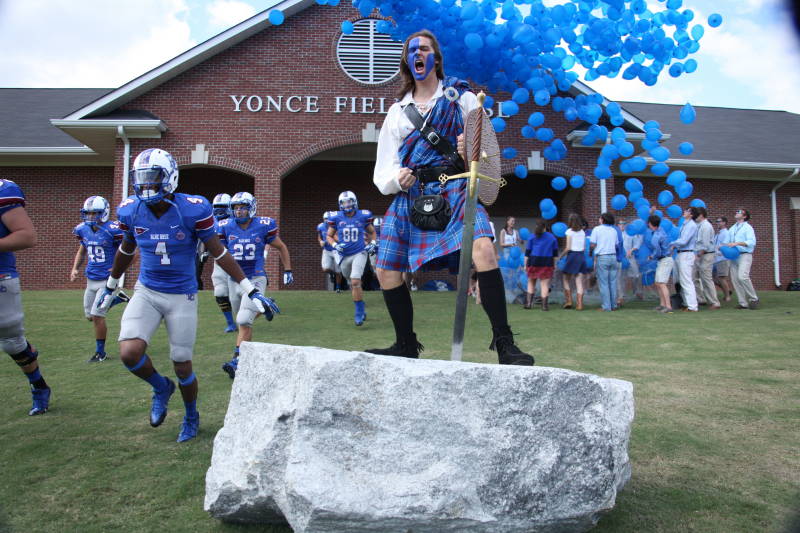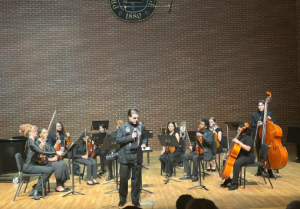How much of your tuition goes to athletics?
February 18, 2016
Presbyterian College is one of the top ranked schools in the state, and with this high ranking comes high tuition. But do we as students really know why our tuition is so high? What does our money even go to? Is it the renovation of Neville that keeps getting delayed, or does it go to the drastically underpaid professors who work extremely hard at making sure we get the best education possible? In reality, a great deal of the tuition may go to something that might surprise the average student: athletics. According to a study by Dr. Jody Lipford and Dr. Jerry Slice, both professors of Economics and Business Administration at PC, it was found that up to $12,000 of each student’s tuition goes toward funding athletics at PC. The article relaying the results of this study was picked up for publication by both Newsweek and The John William Pope Center for Higher Education Policy.
Now this is not going to be a fluff piece condemning athletics for our high tuition, but more of a piece speaking with students on how they feel about this or if they were even aware. I have chosen to keep the students and professors I interviewed on this topic anonymous.
So what do students really know about this? Are they aware that some of their tuition money goes to fund athletic events that they may not even participate in or even attend? None of the students I spoke with were aware of this, and they all gave different responses when they found out. Some were not angry at all, and even considered $12,000 to be a relatively fair amount, while others began to question how much money PC really makes off of athletics. Others were furious, and said the money should be used more wisely (on repairs to dorms that are moldy are in desperate need of renovation).
The cost of athletics vary from school to school. Schools that are Division I can keep this cost minimal to students if they have a large student body (which most Division I schools do) but at Presbyterian College (the smallest Division I-AA School), the cost has to remain high. But for schools wishing to lower the cost of athletics per student, Division II could be a viable option because it drastically lowers the cost. For example, according to the study by Lipford and Slice, if Presbyterian College had remained Division II, the cost of supporting athletics per student would have stayed at about $5,000.
When students were asked if we should considered moving back to Division II, the results varied. Some were for it, feeling that we could be more competitive at the Division II level. One person said we shouldn’t, because he didn’t believe it would ultimately lower tuition. Another person said we should not because we would miss out on money-making games such as games against Ole Miss or Florida (who we play next year). Finally, I brought up moving all the way to Division III, but everyone was against this because of the loss of athletic scholarships that would come with it.
However, a professor also weighed in on the issue, saying, “The board of trustees and the administration needs to come together and make some tough decisions regarding this issue. Division III might be the future.”
The same professor also added that student assessments prove that students put a high level of importance on athletics, but that does not necessarily mean Division I athletics.
Brian Reese, Athletic Director at PC, also added his perspective on the Lipford and Slice article.
“I thought that the article was very well written,” Reese said. “Although informative, it didn’t bring to light any new information related to the cost of sponsoring intercollegiate athletics. Whether you are Division I, Division II, Division III or NAIA, all divisions are aware that athletics cost the institution money. The difference is how you help offset the cost of athletics with the amount of revenue brought in, controlling expenses, and athletic scholarship allocation. Fortunately, at PC, athletics has done a very good job on all three fronts.”
Presbyterian College is not the only college facing this issue. In a study published by USA Today, it was found that only 24 out of 230 Division I athletics generate sufficient revenue to cover the cost of athletics (these were all Power 5 conference schools).
In my personal opinion, PC athletics should drop back down to Division II. The dropoff of $12,000 to $5,000 would be nice. Maybe the extra $7,000 could be spent on raising not only professors’ salaries but the salaries of all employees of Presbyterian College. The money could also possibly be used to finally repair Neville or bring in better technology for all departments. Also a reason for the drop to Division II could be the success ratio. Presbyterian College was drastically more successful at Division II, and with this change a winning tradition could be brought back to PC.
College athletics is a business, plain and simple. However, even with that being said, I will always continue to be a huge college sports fan!






